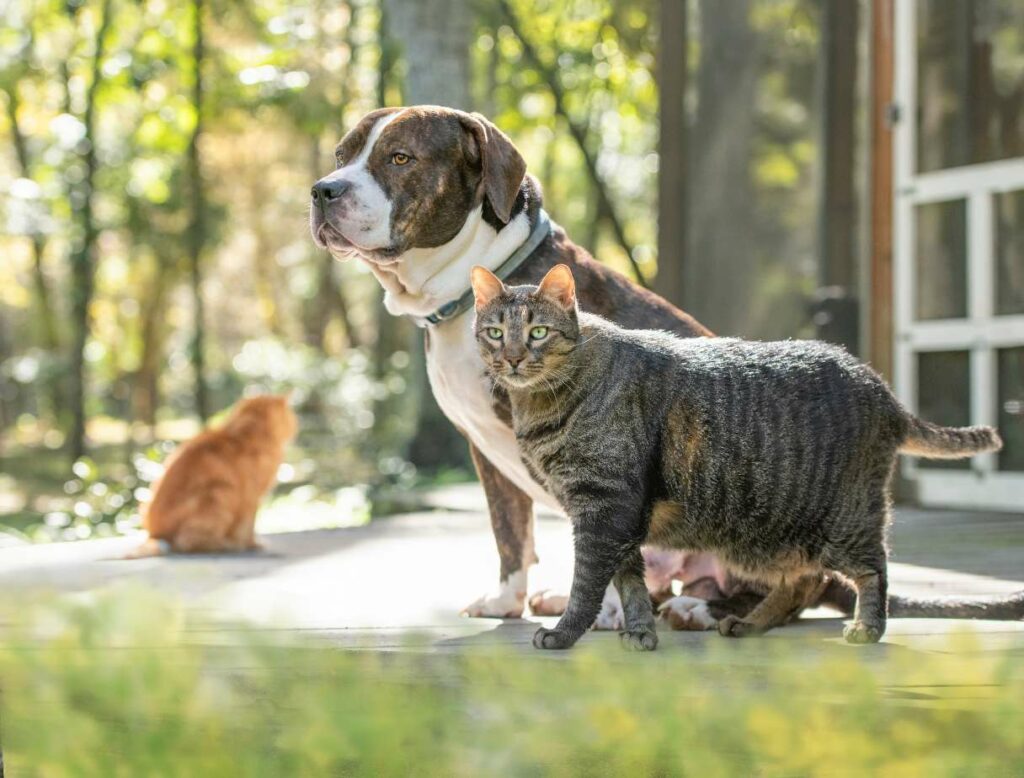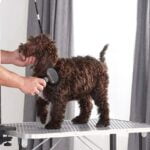Table of Contents
Pet obesity is a growing concern that can lead to various health issues, including diabetes, heart disease, and joint problems. Managing your pet’s weight is crucial for their overall well-being and longevity. In this comprehensive guide, we will explore how to manage pet obesity with effective tips and strategies to help your pet achieve a healthy weight and improve their quality of life.

Recognize the Signs of Obesity
The first step in managing pet obesity is recognizing the signs. Look for excessive body fat, difficulty in movement, shortness of breath, and an inability to engage in physical activities. Regularly monitor your pet’s weight and consult with a veterinarian to determine their ideal weight range. For more details, visit our Signs of Pet Obesity guide.
Consult Your Veterinarian
Before making any changes to your pet’s diet or exercise routine, consult with your veterinarian. They can provide a thorough health assessment, determine the appropriate weight for your pet, and create a customized weight management plan. This plan may include specific dietary recommendations, exercise routines, and monitoring schedules. For more information, see our Veterinary Consultation Tips.
Adjust Their Diet
Diet plays a crucial role in managing pet obesity. Switch to a high-quality, low-calorie pet food that provides essential nutrients without excess calories. Measure your pet’s food portions accurately and avoid free-feeding. Consider feeding smaller, more frequent meals to keep their metabolism active. For specific dietary guidelines, check out our Pet Diet Guide.
Limit Treats and Snacks
While treats are a great way to reward your pet, they can contribute to weight gain if given excessively. Limit the number of treats and opt for healthy, low-calorie options. You can also use pieces of their regular food as treats to avoid adding extra calories to their diet.
Increase Physical Activity
Exercise is essential for weight management. Engage your pet in regular physical activities such as walking, running, and playing. For dogs, consider activities like fetch, agility training, and swimming. For cats, use toys that encourage movement, such as laser pointers and feather wands. For more exercise ideas, visit our Pet Exercise Tips.
Create a Routine
Establish a consistent feeding and exercise routine. Consistency helps your pet understand what to expect and can make managing their weight easier. Stick to regular meal times and incorporate exercise sessions into your daily schedule.
Monitor Progress
Regularly monitor your pet’s weight and body condition. Keep a journal to track their food intake, exercise, and weight changes. Regular weigh-ins and body condition scoring can help you determine if your weight management plan is effective. For tips on tracking progress, see our Track Your Pet’s Progress guide.
Provide Mental Stimulation
Mental stimulation is important for overall health and can prevent boredom that leads to overeating. Use puzzle feeders, interactive toys, and training sessions to keep your pet mentally engaged. This can also help reduce stress and anxiety, which can contribute to weight gain.
Consider Weight Management Products
There are various weight management products available, such as weight control pet foods, supplements, and interactive feeders. Consult with your veterinarian before introducing any new products to ensure they are safe and effective for your pet.
Be Patient and Persistent
Weight management is a gradual process that requires patience and persistence. Avoid crash diets or drastic changes that can harm your pet’s health. Stick to your veterinarian’s plan and make adjustments as needed. Celebrate small victories and remain committed to your pet’s health journey.
Conclusion: How to Manage Pet Obesity
Understanding how to manage pet obesity involves a combination of proper diet, regular exercise, and consistent monitoring. By following these essential tips and working closely with your veterinarian, you can help your pet achieve a healthy weight and improve their quality of life. For more resources on pet health and wellness, visit our Pet Health and Wellness section.
Frequently Asked Questions about Managing Pet Obesity
How can I tell if my pet is overweight?
Signs that your pet is overweight include difficulty in movement, visible fat deposits, and trouble breathing. For more information, visit PetMD.
What is the best diet for an overweight pet?
The best diet for an overweight pet includes high-quality, low-calorie food with balanced nutrients. Consult your veterinarian for specific dietary recommendations. For diet tips, visit AKC.
How much exercise does my overweight pet need?
Overweight pets need regular exercise, such as daily walks, playtime, and interactive games. The amount of exercise depends on your pet’s age, breed, and health. For exercise guidelines, visit The Spruce Pets.
Are there any supplements that can help with pet weight loss?
Some supplements can aid in weight loss, but it’s important to consult your veterinarian before using them. For more information on supplements, visit PetMD.
How long does it take for a pet to lose weight?
The time it takes for a pet to lose weight varies based on their starting weight, diet, and exercise regimen. It can take several months to achieve a healthy weight. For more insights, visit VCA Hospitals.










